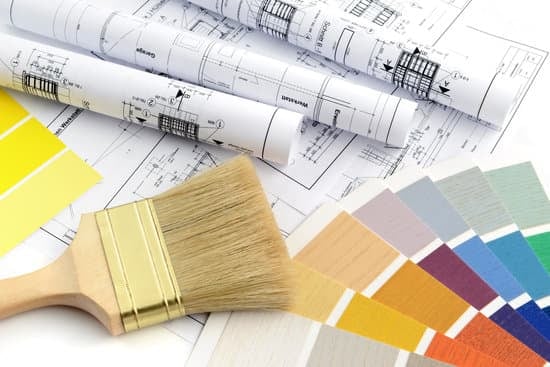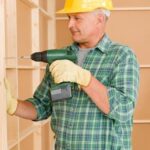Does a new roof qualify for energy-saving home improvements? When it comes to making our homes more energy-efficient, many homeowners are eager to explore options that can contribute to cost savings and reduce their environmental impact. One often overlooked area for potential energy savings is the roof. In this article, we will delve into the benefits of energy-saving home improvements and discuss how a new roof can play a significant role in achieving this goal.
Making energy-saving improvements to a home offers a wide range of benefits, from reducing utility costs to minimizing the environmental footprint. With advancements in roofing materials and design, homeowners have the opportunity to not only enhance the aesthetic appeal of their homes but also significantly improve their energy efficiency.
Understanding the different types of energy-saving roofing materials, as well as the importance of proper construction and design, can make a considerable difference in a home’s overall energy consumption. Furthermore, government incentives and tax credits may be available for those considering such improvements, including installing a new roof. These factors make it crucial for homeowners to consider all available options when aiming to make their homes more energy-efficient.
The Benefits of Energy-Saving Home Improvements
Energy-saving home improvements offer a wide range of benefits for homeowners, including significant cost savings and a positive environmental impact. By investing in energy-efficient upgrades, such as a new roof, homeowners can enjoy lower energy bills, reduced maintenance costs, and contribute to the overall sustainability of their community. One of the key benefits of making energy-saving improvements to a home is the long-term cost savings.
For example, installing an energy-efficient roof can help regulate indoor temperatures more effectively, reducing the need for excessive heating or cooling throughout the year. This leads to lower utility bills and less strain on HVAC systems, ultimately saving homeowners money in the long run.
In addition to cost savings, energy-saving home improvements also have a positive environmental impact. By reducing energy consumption through efficient roofing materials and design, homeowners can decrease their carbon footprint and contribute to overall environmental sustainability.
For instance, cool roofs and reflective shingles can minimize heat absorption and reduce the urban heat island effect, thereby helping mitigate climate change impacts at a local level. Furthermore, proper roof insulation and ventilation can improve overall energy efficiency by minimizing heat loss during the winter and heat gain during the summer.
Moreover, many homeowners may qualify for government incentives and tax credits when making energy-saving improvements to their homes. These financial benefits provide additional motivation for investing in energy-efficient upgrades like a new roof. By taking advantage of available programs designed to promote sustainable practices, homeowners can offset some of the initial investment costs associated with these improvements while reaping long-term financial rewards.
| Benefits | Details |
|---|---|
| Cost Savings | Lower energy bills, reduced maintenance costs. |
| Environmental Impact | Reduction in carbon footprint; contribution to environmental sustainability. |
| Government Incentives and Tax Credits | Potential financial benefits available for making energy-saving home improvements. |
Understanding Energy-Saving Roofing Materials
When it comes to making energy-saving home improvements, the type of roofing material used can have a significant impact on a home’s energy efficiency. There are several options available for homeowners looking to upgrade their roofs with materials that can help reduce energy consumption and lower utility costs. Some of the most popular energy-saving roofing materials include:
- Cool Roofs: These types of roofs are designed to reflect more sunlight and absorb less heat than traditional roofs. They are often made with highly reflective paint, sheet coverings, or shingles.
- Reflective Shingles: Similar to cool roofs, reflective shingles are designed to reflect more sunlight and heat away from the roof. They are available in a variety of materials, including asphalt, metal, and even clay.
In addition to these specific roofing materials, homeowners should also consider the color of their roof. Light-colored roofs tend to reflect more sunlight and heat compared to dark-colored roofs, contributing to overall energy efficiency. When exploring energy-saving roofing materials, it is important for homeowners to consult with experienced roofing professionals who can assess their specific needs and recommend the best options for their homes.
Proper installation and maintenance of these energy-saving roofing materials are essential for achieving maximum energy efficiency. Homeowners should ensure that their roofs are installed by qualified contractors who have expertise in handling these specialized materials. By investing in high-quality energy-efficient roofing materials and professional installation, homeowners can look forward to cost savings on their utility bills and reduced environmental impact from their homes’ energy consumption.
Energy-Efficient Roofing Design
When it comes to energy-efficient home improvements, the design and construction of a roof play a crucial role in contributing to overall energy efficiency. Proper insulation and ventilation are key components that can make a significant impact on energy savings and comfort within a home.
The Importance of Proper Insulation
One of the primary factors in creating an energy-efficient roof is the use of adequate insulation. Proper insulation helps regulate the temperature within the home, reducing the need for excessive heating or cooling. This, in turn, leads to lower energy consumption and cost savings for homeowners. Common insulation materials used in roofs include fiberglass, cellulose, and foam board insulation, each with its own set of advantages in terms of thermal performance and energy efficiency.
The Role of Roof Ventilation
In addition to insulation, ventilation is another vital aspect in achieving energy efficiency through roofing design. Proper roof ventilation allows for the release of excess heat and moisture from the attic space, preventing issues such as ice dam formation, mold growth, and premature deterioration of roofing materials. By promoting air circulation and preventing heat buildup in the summer months, proper roof ventilation can help reduce the strain on HVAC systems and improve overall energy efficiency within the home.
Evaluating Your Roof’s Current Design
Homeowners considering energy-saving improvements should assess their current roof design to identify any potential areas for improvement. Consulting with a qualified roofing professional can provide valuable insight into the existing insulation levels, ventilation system effectiveness, and opportunities for upgrading to more energy-efficient materials or designs. By understanding how these elements work together to impact a home’s overall energy efficiency, homeowners can make informed decisions about investing in upgrades to their roofing system.
Government Incentives and Tax Credits
When considering making energy-saving home improvements, it’s important to understand the potential financial incentives and tax credits that may be available. The government offers various programs aimed at encouraging homeowners to invest in energy-efficient upgrades, including the installation of a new roof. Here are some key points to consider when it comes to potential financial benefits for making energy-saving home improvements:
- Federal Tax Credits: The federal government offers tax credits for certain energy-efficient home improvements, including the installation of a new roof with qualifying materials. Homeowners may be eligible for a tax credit of up to 10% of the cost of the roofing materials, up to a maximum of $500.
- State and Local Incentives: In addition to federal tax credits, many states and local municipalities offer their own incentives for energy-saving home improvements. These can include rebates, grants, or low-interest loans specifically for upgrading to energy-efficient roofing materials or designs.
- Energy-Efficient Mortgage Programs: Some lenders offer specialized mortgage programs that allow homeowners to finance energy-saving upgrades – such as a new roof – directly into their mortgage loan. This can provide additional financial assistance by spreading the cost of the improvement over time.
It’s important for homeowners to research and understand the specific requirements and eligibility criteria for these financial incentives. Working with a qualified contractor who is knowledgeable about energy-efficient roofing materials and construction methods can also help ensure that homeowners meet all necessary guidelines to qualify for these benefits.
By taking advantage of these incentives, homeowners can not only save money on their initial investment in an energy-efficient roof but also enjoy long-term savings on their energy bills while reducing their environmental impact.
Hiring a Qualified Contractor
When considering a new roof as an energy-saving home improvement, hiring a qualified contractor is crucial to ensure that the installation is done properly and effectively. Without the expertise of a reputable contractor experienced in energy-efficient roofing installations, homeowners may not fully realize the benefits of their investment. Here are some tips and advice on how to find the right contractor for the job.
Research and Credentials
Before hiring a contractor, it’s important to conduct thorough research and check their credentials. Look for contractors who are certified by reputable organizations or manufacturers of energy-efficient roofing materials. Additionally, seek out references from past clients and inquire about their experience with the contractor’s workmanship and professionalism.
Experience With Energy-Efficient Roofing
When considering potential contractors, prioritize those who have specific experience with energy-efficient roofing installations. Inquire about their knowledge of different types of energy-saving roofing materials and their proficiency in implementing design features that contribute to energy efficiency.
Written Estimates and Contracts
Obtain written estimates from multiple contractors before making a decision. The estimate should include details about the scope of work, timeline, material specifications, and cost breakdown. Once you’ve selected a contractor, ensure that all terms and expectations are clearly outlined in a contract before any work begins.
By taking these considerations into account when hiring a qualified contractor for energy-efficient roofing installations, homeowners can ensure that their new roof contributes to their overall goal of making energy-saving home improvements.
Case Studies
One real-life example of a homeowner benefiting from installing an energy-efficient roof is the Smith family. After replacing their old asphalt shingle roof with a cool roof made of reflective materials, they saw a significant decrease in their monthly energy bills.
The reflective properties of the new roof material helped reduce the amount of heat absorbed by the home, resulting in lower cooling costs during the hotter months. The Smiths were able to save an average of 15% on their energy bills each month, resulting in substantial long-term cost savings.
Another case study involves the Johnson family, who opted for a green roof installation as part of their energy-saving home improvements. The living roof not only provided additional insulation and reduced heat gain but also contributed to improved air quality and stormwater management.
As a result, the Johnsons noticed a 20% decrease in their overall energy consumption after installing the green roof. Additionally, they were able to qualify for tax credits and rebates offered by local government agencies for making eco-friendly upgrades to their home.
Lastly, the Garcia family’s experience highlights the importance of proper insulation and ventilation as part of an energy-efficient roofing design. By working with a qualified contractor to improve attic insulation and ventilation while replacing their old roof with energy-efficient materials, the Garcias achieved a more balanced indoor temperature throughout the year. This resulted in lower heating and cooling costs, leading to an impressive 25% reduction in their annual energy expenses.
| Homeowner | Energy Savings |
|---|---|
| The Smith Family | 15% |
| The Johnson Family | 20% |
| The Garcia Family | 25% |
Conclusion
In conclusion, it is clear that a new roof can indeed qualify as an energy-saving home improvement, and the benefits of such a renovation are significant. Energy-saving home improvements not only lead to cost savings for homeowners through reduced utility bills, but they also have a positive impact on the environment by decreasing energy consumption.
Understanding the different types of energy-efficient roofing materials and designs is crucial for homeowners who are considering a new roof. Whether it’s cool roofs or reflective shingles, the right choice can make a substantial difference in energy efficiency. Additionally, taking advantage of government incentives and tax credits for making these improvements can provide financial relief for homeowners.
It is essential for homeowners to hire a qualified contractor experienced in energy-efficient roofing installations to ensure that the project is completed successfully. By investing in an energy-efficient roof, homeowners not only improve the comfort and value of their homes but also contribute to a greener future. It is important for individuals to consider a new roof as an energy-saving home improvement, as it can have a lasting impact on both their finances and the environment.
Frequently Asked Questions
Can You Write Off a New Roof on Your Taxes?
Whether you can write off a new roof on your taxes depends on the specific circumstances. In general, the cost of a new roof is considered a capital improvement to your home and is not typically deductible as a repair or maintenance expense.
However, there are certain situations where a new roof may be eligible for tax credits or deductions, such as installing energy-efficient roofing materials.
Do Shingles Qualify for Energy Tax Credit?
Shingles may qualify for an energy tax credit if they meet certain criteria set by the federal government. As of now, the criteria for energy tax credits include using Energy Star certified roofing materials that meet specific energy efficiency requirements.
It’s important to check with the IRS or a tax professional to determine if the shingles you plan to use qualify for an energy tax credit.
Are Shingles Energy Star Rated?
Some shingles are indeed Energy Star rated, meaning they have been independently certified to meet certain energy efficiency requirements set by the Environmental Protection Agency (EPA). Energy Star rated shingles can help reduce heating and cooling costs by reflecting more of the sun’s rays and helping regulate indoor temperatures.
When considering re-roofing your home, it’s worth looking into Energy Star rated shingles as a way to potentially save on energy costs in the long run while improving your home’s environmental impact.

I’m thrilled to have you here as a part of the Remodeling Top community. This is where my journey as an architect and remodeling enthusiast intersects with your passion for transforming houses into dream homes.





